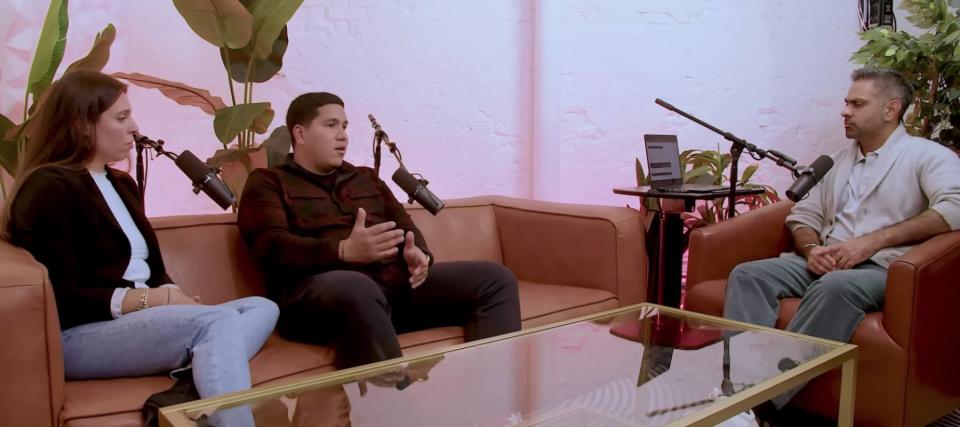‘We’re drowning in debt… but I drive a BMW’: Young couple has $628.5K debt but no realistic plan to manage it all

For many, car ownership is synonymous with the American dream. An expensive luxury car is often a symbol of financial success. But for some, it’s also a symbol of unsustainable debt.
Kevin’s obsession with luxury cars has pushed his family’s auto loan balance up to $99,000. The sheer size of his family’s consumer debt even caught personal finance YouTuber Ramit Sethi off guard when they appeared on his show, “I Will Teach You To Br Rich.”
Don't miss
Commercial real estate has beaten the stock market for 25 years — but only the super rich could buy in. Here's how even ordinary investors can become the landlord of Walmart, Whole Foods or Kroger
Cost-of-living in America is still out of control — use these 3 'real assets' to protect your wealth today, no matter what the US Fed does or says
These 5 magic money moves will boost you up America's net worth ladder in 2024 — and you can complete each step within minutes. Here's how
“My jaw dropped several times during our conversation,” Sethi says. The vlogger’s shock at the situation was no doubt reflected in the title he and his team gave the episode: “We're drowning in debt… but I drive a BMW.”
But Kevin’s far from alone in this. Here’s why many Americans are falling into the same trap.
Car obsession
As of 2022, 91.7% of households had at least one vehicle, according to the U.S. Census Bureau 5-Year American Community Survey (2018-2022). The rising cost of new and used cars hasn’t discouraged ownership. Instead, Americans have stretched their budgets and borrowed money to keep their cars.
Outstanding auto loans were collectively worth $1.62 trillion at the end of the first quarter of 2024, according to the Federal Reserve’s quarterly report on household debt and credit. That makes it the largest source of non-mortgage debt for ordinary Americans, ahead of both student loans and credit cards.
The average auto loan for a new car is $40,634, according to the latest Experian State of Automotive Finance Market report. Kevin and his wife Michelle owe significantly more. Her auto loan balance is $30,000 while his is $69,000. They now regret buying a fancy BMW that was clearly beyond their budget.
“I don't even know why we got that car to be honest because we did the math on it and we couldn't afford it and then I don't know what happened,” says Michelle. “I know what happened. We still went for it because I was just being an enabler and I said ‘Yeah, like, it's OK, we'll figure out how to make it work.’”
Kevin admits the situation is “ridiculous.”
Unfortunately, the couple has managed to accumulate all other forms of debt as well. Their mortgage is $414,000, student loan balance is $30,000 and outstanding credit card debt is at $73,000. Altogether, they owe $628,500. Sethi says they’re “drowning in debt” and need to quickly get out.
Fortunately, he sees an easy fix.
Read more: Car insurance rates have spiked in the US to a stunning $2,150/year — but you can be smarter than that. Here's how you can save yourself as much as $820 annually in minutes (it's 100% free)
Easy solution
Kevin and Michelle have higher-than-average consumer debt, but they also earn more than the average family. Their combined monthly gross income is $18,000, which means they earn $216,000 on an annual basis.
“Making over $200,000 a year and being concerned if you can afford a meal? That's a problem,” says Sethi.
With a few adjustments, they could start paying off their sizable debt burden. The first step, according to Sethi, is to sell the cars and downgrade to cheaper models. Kevin will probably take a loss on this because the car isn’t worth what he paid for it, but the family understands how essential it is to reduce their monthly car payments.
The next step is to focus on reducing fixed costs and delaying major expenses such as vacations to focus on paying down the credit cards.
“It's going to suck,” Sethi explains. “You're going to lose money but over the course of 12 months, 18 months, 36 months, that's when you're really going to start to see those savings.”
What to read next
Car insurance premiums in America are through the roof — and only getting worse. But 5 minutes could have you paying as little as $29/month
Jeff Bezos and Oprah Winfrey invest in this asset to keep their wealth safe — you may want to do the same in 2024
Stop crushing your retirement dreams with wealth-killing costs and headaches — here are 10 'must-haves' when choosing a trading platform (and 1 option that has them all)
This article provides information only and should not be construed as advice. It is provided without warranty of any kind.